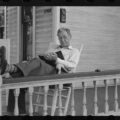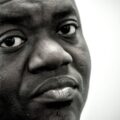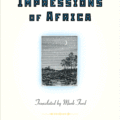Why the Irish Feel the Way They Feel About Irish

Exhorted by his university classmates to be “one of us” and more nationally minded, Stephen Dedalus, James Joyce’s fictional version of himself in A Portrait of the Artist as a Young Man, scathingly retorts: “My ancestors threw off their language and took another … Do you fancy I am going to pay in my own life and person debts they made?”
These sentiments have been uttered by generations of Joyce’s compatriots since his first novel was published in 1916, most stridently by the yearly cohorts of school leavers required by the state exam system to demonstrate competence in a language they will most likely never use seriously again. In all probability, however, an acute sense of affinity and a vague sense of duty in relation to the Irish language will accompany these people throughout their lives, just as their parents’ and grandparents’ sense of Irishness is haunted by a language which, never their vernacular, they have nonetheless always understood as their native tongue.
The potency of such feelings about Irish is discernible when the population is asked to self-assess fluency in the language on the national census survey (conducted every five years but postponed for a year during the Covid pandemic). The data produced by the 2016 census would give the uninitiated visitor to Ireland the impression that the language is widely spoken, an unlikely 1.8 million people—41% of the population over the age of three—claiming to be speakers of the language. No doubt the laconic Dedalus would have been alert to the ironies latent in this statistic yet the vehemence of his own rejection of Irish equally demonstrates the depth and complexity of the relationship Irish people have with the language and how the national business of its resurrection came to be understood as a personal responsibility.
The idea that the Irish language is essential to Irish identity has a long and surprising history. Perceived as a “barbaric” “rebbelltonge” by Tudor and Stuart imperialists who had supplanted Gaelic rule in Ireland by the early seventeenth century, the language was nonetheless mobilised during this period to spread the new religion of Anglicanism to the indomitably Catholic Irish. The very first printed book in Irish—Aibidil Gaoidheilge agus Caiticiosma (“Irish Alphabet and Catechism”) published in 1571—was designed as a primer in the language for Anglican missionaries in their quest to rid Ireland of Papism.
The newly established Trinity College Dublin was as a centre of excellence of sorts in this proselytising enterprise. William Daniel, one of the class of three who were the first to enrol in the college when it opened in 1592, produced an Irish translation of the New Testament in 1602 and later an Irish version of the quintessentially Anglican Book Of Common Prayer. One of Trinity’s first Provosts, William Bedell, an English-born, Cambridge graduate, insisted that the nightly prayers in the college chapel were conducted in Irish and oversaw the publication of an Irish-language Old Testament in 1632. (Two and a half centuries later, the playwright John Millington Syne would study the language in Trinity’s School of Divinity as a core component of his training in the Anglican church, an experience which prompted him to “relinquish the kingdom of God” for the “Kingdom of Ireland”).
This Protestant nexus with Irish deepened over subsequent generations despite the inadequacy of the language as a vessel of religious conversion. Throughout the eighteenth and nineteenth centuries, erudite members of the Anglo-Irish Ascendancy established organizations with quixotic names—the Ossianic Society, the Iberno-Celtic Society—to study the language and the paganistic customs of the native Irish, a version of the antiquarian fetish among Europe’s upper classes during the period. Just as vanished Hellenic and Oriental civilizations were glorified in imperial societies in response to the sterility of the industrial age, the Anglo-Irish similarly perceived in the language of their impoverished tenants poetic and spiritual energies that had been drained from their own globalized mother tongue. These groups proved crucial to the recording and preservation of a language which was disappearing fast as a vernacular but they also produced some very strange notions about the Irish language.
Convinced that Irish was “the most original and unmixt language yet remaining in any part of Europe”, antiquarians outdid each other with the extravagance of their claims about the language’s provenance and purity. The wonderfully named Theophilus O’Flannagan informed a meeting of the Dublin Gaelic Society in 1808 that Irish was “the language of Japhet [Noah’s son], spoken before the Deluge, and probably the language of Paradise;” another enthusiast claimed that Homer’s Iliad was composed in Irish. These gentlemen philologists did not conceive of the language in terms of the identity politics through which it is generally viewed today and, for most, their devotion to the language did not disrupt their own sense of Britishness (one of the most prominent Irish language scholars in the late eighteenth century was Charles Vallancey, a general in the British army who played a prominent role in the suppression of a nationalist rebellion in 1798).
Yet the bizarreness of their ideas about the Irish language betrayed certain anxieties concerning the political and social status of the Ascendancy class itself, anxieties that were especially acute in the period following the Act of Union in 1801 when the Anglo-Irish parliament in Dublin was dissolved and Westminster assumed direct control of the country’s affairs. Celticism was embraced by the beleaguered Irish gentry in an effort to assert a kind of spiritual superiority over their ‘mainland’ political masters whilst their identification with an ancient and ‘authentic’ culture reiterated the legitimacy of Ascendancy rule itself.
It was only with the emergence of the Young Ireland movement in the 1840s that we begin to see the kind of nationalist ideology now associated with the Irish language (if less so in the Republic in recent years). Spear-headed by Thomas Davis, who was deeply influenced by the romantic nationalism of Johann Herder and other figures associated with German Idealism, the Young Irelanders broke from the political pragmatism of nationalist leader Daniel O’Connell and his urging of the Irish people to abandon their native language in favor of English and the socio-economic benefits it promised. For Davis, without the Irish language there was simply no country to campaign for: “to lose your native tongue, and learn that of an alien, is the worst badge of conquest. To have lost entirely the national language is death.” As the emergence of vernacular nationalism on the Continent would redraw the map of Europe by the end of the nineteenth century, the birth of this distinctly cultural, instead of a merely political, nationalism in Ireland would shape the country over the course of the next century.
A country of storytellers, Ireland boasts an impressive history of iconic speeches: Robert Emmet at the dock, Daniel O’Connell at Westminster, Padraig Pearse by the graveside, Eamon De Valera on the radio. But in terms of its cultural and political reach, arguably the most important speech in modern Irish history was delivered on November 25, 1892 by Douglas Hyde, the influential Irish language activist who would become Ireland’s first president after independence.
Addressed to the National Literary Society in Dublin’s Leinster House (now the seat of the Irish parliament), Hyde’s speech was provocatively entitled “The Necessity for De-Anglicising Ireland” and was later widely published. In a speech not unaffected by the influence of eugenics on political and cultural thought during the period, Hyde bemoans what he sees as the coarsening of Irish culture which has come with the decline of the native tongue, by how “one of the most classically learned and cultured nations in Europe” has become a culture marked by “hideousness.” Invoking the fate of the “Red Indian”, Hyde’s speech imagines the complete death of the Irish language and a coherent Irish identity along with it, in which case “West Britonism … will overwhelm us like a flood.” Hyde’s philosophy of “De-Anglicisation” thus helped to essentialize two potent ideas in Irish cultural consciousness: the impending extinction of the Irish language and the almost dysgenic vulgarity of English culture and the English language itself.
The rhetoric of cultural revival swept through turn-of-the-century Ireland fixating on the urgent need to resuscitate the Irish language for the spiritual health of the nation. Organs of nationalist opinion repeatedly warned against “the poisoned flood that is pouring into the country”, “the internal cancer that is eating away the heart and soul of Ireland … the English language.” Irish was portrayed as a “bulwark”, a “barrier” against this tide of moral disease; according to the editor of a leading nationalist newspaper: “to expel the poison we must use the natural antidote—the cultivation of the native speech.” These ideas had a powerful hold on the public imagination, exciting a group of locals in Limerick city in October 1911 to burn a shipment of English Sunday newspapers, the patriots praised by the influential Catholic Bulletin “for being in the vanguard to fight the foreign foe.”
The perception of the English language, the vernacular of the vast majority of the Irish people, as morally unhygienic inevitably influenced the teaching of Irish in the language classes which flourished throughout the country when the Gaelic League, an organization which campaigned for the revival of the language, was established in 1893. Like many of his classmates at University College Dublin, a young James Joyce enrolled in the college League branch but soon quit as his teacher “found it necessary to exalt Irish by denigrating English” (his teacher was the aforementioned Padraig Pearse, later one of the leaders of the 1916 Easter Rising). Joyce would have his revenge by parodying the ideology of the cultural revival in the “Cyclops” episode of Ulysses in which ‘the Citizen’, the one-eyed xenophobe holding court in Barney Kiernan’s pub, spouts venom about “the bloody brutal Sassenachs and their … syphilization”, his nationalist convictions comically undercut by his poor grasp of the Irish language.
Tremendous ideological pressure was placed on the Irish language in the first decades of independence. For the first governments of the Irish Free State, making Irish essential to the lives of citizens promised a sense of national cohesion amidst the acute instability brought about by partition and civil war. There was also a distinct sense among the ideologues of the new state that only an Irish-speaking Ireland would legitimize the state itself and the effort undertaken to create it.
Writing in 1927, scholar and politician Michael Tierney gloomily predicted that “the historians who in days to come set out to measure the achievement of post-Treaty Ireland will use as their principal criterion its success or failure in the task of restoring the Irish language … If we fail, it is not at all improbable that the discerning historian will write opposite the year 1940 or thereabouts, ‘Finis Hiberniae’.” Compared to current government strategy, policy thinking in relation to the Irish language in the post-independence era verged on the fanatical, the leaders of the new state envisaging nothing more than the reversal of centuries of complex linguistic change and the re-establishment of Irish as the vernacular of the Irish people: “until we have it again on our tongues and in our minds”, the iconic military leader Michael Collins wrote shortly before his death, “we are not free.”
But how could this national goal be achieved when, according to estimates in the early 1920s, barely 6% of the population were fluent in the language? A number of schemes were considered, many of which now seem not only far-fetched but crude forms of social engineering. These included the proposal that “colonies of Irish speakers” from the Gaeltacht—the western fringe of the country in which Irish had survived—should be re-settled on “good land elsewhere” thereby ensuring that the speaking of Irish and also speakers of Irish would “increase and multiply”, the rhetoric of language revival tellingly betraying fears concerning the economic viability of a new nation-state with a treacherously low population (with the exception of an Irish-speaking enclave established in the midlands in the 1930s such plans were never fully realized). In the same vein, the Professor of Education at Joyce’s alma mater, Timothy Corcoran, recommended to government that the children of the Gaeltacht should be mobilized for “national ends” as teachers, insisting that “boys or girls of 14 years … are, in vast numbers, born teachers and they like the work in itself”; in arguing his case, Corcoran, a Jesuit priest, pointed to the ‘employment’ of five-year-old children in Chinese match-stick factories as evidence of the dexterity of “the child acrobat”.
It was with the children of the infant nation-state that the burden of language revival was ultimately placed. The introduction of the National School system in the 1830s had proved fateful in the shift towards English as the dominant language in nineteenth-century Ireland and the feared “tally stick”—used to beat children who reverted to their Gaelic mother tongue—still loomed large in the folk memory of the citizens of independent Ireland. It is not a matter of historical irony that the same, if perhaps less brutal, approach was adopted by the new state to replicate the process in reverse.
In a parliamentary debate on the issue in September 1923, W.T. Cosgrave, the country’s new head of state, articulated the deeply-held convictions behind the decision to make the learning of Irish compulsory in the schools of the new Ireland: “How are we going to reconstruct this nation? Must we not look to the Minister of Education to mark the gaelicisation of our whole culture … to make our nation separate and distinct and something to be thought of?” Indeed, as early as 1922, as the country slipped into the nightmare of civil war, educational provision was already being radically altered to accommodate an increased focus on Irish: science, art, even classes in hygiene were forsaken to accommodate the teaching of a language which, in truth, few spoke and many would never truly speak.
Not unsurprisingly, many of those involved in the language movement were hesitant about the idea of compulsory Irish, if not hostile to it. These included the minister to whom Cosgrave referred.
Eoin MacNeill, co-founder of the Gaelic League with Douglas Hyde—who also had reservations about forcing children to study the language he loved—reluctantly implemented government policy but anticipated the contempt for the language that this would breed: “a purely bureaucratic and official favouring of Irish, in the absence of a strongly favourable public attitude, would lead to no desirable result, nothing more than a barren conformity” (MacNeill later resigned as Minister for Education).
Only six years after independence was achieved, the Irish Quarterly Review, the house journal of the self-anointed intelligentsia of the Free State, pithily exposed the culture of self-deception which had already begun to mark the public relationship with the Irish language: “the people leave the problem to the Government, the Government leaves it to the Department of Education, the Department of Education to the teachers, and the teachers to the school-children. Only the very young are unable to shift the burden to someone else’s shoulders, so perhaps they will learn to carry it, and save our faces.” Yet the bureaucratic approach to the language hardened and MacNeill’s fear of a “barren conformity” typified most people’s experience of the language.
Today, there is a much healthier public attitude to Irish, evident in the growing demand for Irish-language schooling and for more meaningful social opportunities to use the language. Yet, many of the ideas that have been entertained about Irish over the centuries persist. Just as the gentry of the eighteenth and nineteenth centuries turned to the perceived mysticism of the language in recoil from the disquieting mechanization of life, many Irish people today feel that the language provides a spiritual antidote to the hollowness of a globalized and increasingly digitalized world. Clearly, too, the ongoing controversy surrounding the Irish language in the north of Ireland rehearses the identity politics historically associated with the language and which has ultimately proved damaging to its social reach.
Like Stephen Dedalus, Irish people’s experience of the language of their forefathers has been shaped, and burdened, by ideological claims about the language. It is difficult, for example, to imagine an Irish person—at least, a person from the nationalist tradition—who when asked “what is your native language?” would answer without nervousness or qualification with the name of the only language they speak fluently. Every five years, as the population vacillates over the census form, we are confronted with an even more daunting question: “do you speak Irish?”
About Alan Graham
Alan Graham is an Irish studies scholar whose recent publications include essays in Beckett and Politics (Palgrave Macmillan, 2021) and Science, Technology, and Irish Modernism (Syracuse University Press, 2020). He is currently completing a study entitled Tir Gan Teanga: Language and the Irish Cultural Imagination.





